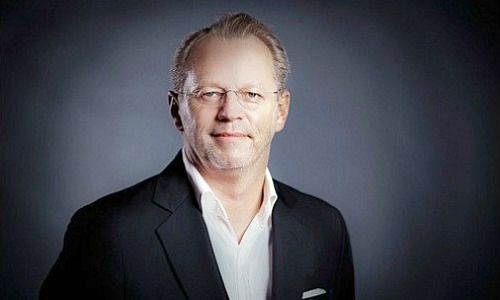After Michael Bornhaeusser described in his last essay how he got into venture capital, he now talks about how to decide to invest in a specific company or not.
By Michael Bornhaeusser, Co-Owner of Sallfort Privatbank and Head of Private Equity
My experience in Switzerland is that many investors in this space don’t look hard enough, and don’t take key parameters for a successful start-up investment seriously enough.
At Sallfort, we can between 40 and 50 companies closely every year. In a given year, we may not invest at all if we don’t find anything which fits our expectations. Through the years, we’ve developed an extensive process which is more or less the same with each potential investment. We have a checklist which has to be not only answered but, more importantly, verified. It looks like this:
1. Unique Feature
Does the product or service has a unique selling point in its market? We carry our our own market and competitive analysis and compare similar – or often equivalent – products and services available in the market.
Only if a product has a clear market advantage to its competition, as well as market potential, do we proceed. We often use so-called reality checks to confront potential clients, users and partners from our network with a product in order to get their feedback.
2. Market Position and Intellectual Property
If a company is ten times the size of its nearest competitor, it mainly wants to cement ¬– and further expand – its market position. The probability of such a firm garnering a higher valuation than the number-two player is very high, so we invest mainly in market leaders.
In high-tech products, intellectual property rights on technology play a major role. We verify these rights, often with patent lawyers, to ensure that they are enforceable and can give the company a head-start.
3. Management
No successful corporate development without good management: top executives have to be capable of leading not just the company in its current form, but also as it grows considerably larger.
We carry out an extensive assessment of management and instrumental people such as developers and other key employees. This typically includes an expert evaluation of software quality.
4. Distribution and Marketing
If you want to grow, you have to be able to sell. We do a detailed review of the distribution and the market concept of every company we look at.
Is the company investing enough, are the most important target groups being addressed, does the company message fit the way is presents itself creatively?
5. Business Plan
Business plans and forecasts from start-ups are always very optimistic. We undertake a market analysis which verifies potential revenue, and compare it against the company’s projections.
We generate our own financial plan, and assume that product development will take longer and revenue won’t grow as rapidly as predicted by the company. If we can still see an investment despite much more conservative projections, we proceed.
6. Exit Strategy
Our investment timeline is three to five years, maximum. That means that is the investment phase, a potential «exit» should already be part of the planning – or at least broached.
What potential buyers could emerge for a company? Is there an opportunity to go public through an initial public offering? Is the company large enough, or growing quickly enough, to warrant an IPO?
Unlike in Switzerland, investors in the U.S. have the option of a «secondary transaction» to exit, besides a classical trade sale or an IPO. This simply means that an investor such as a private equity fund comes in at a late stage, and buys out previous investors. We look at options like this and develop a scenario for our eventual exit. This has to fit into our investment horizon, otherwise we don’t proceed.
7. Valuation
In the end, it all comes down to valuation. There are two potential situations in venture capital deals. One is a lead investor which covers the bulk of the investing round and has hammered out the deal terms with the company itself. This is a «take it or leave it» situation in which others can either accept the conditions set by the lead investor, or walk away.
The other scenario is that we are the lead investor negotiating all terms like valuation and liquidation preference as well as other rights.
We use data from recent investment rounds seen at comparable companies, available from «Crunchbase» and other publications, to validate fair valuation. However, the best clues for valuation come from a network of venture capital partners who often provide detailed information on the investments terms they have recently invested under. At the end of the day, the «proper» valuation is one which can be accepted and will be paid by various investors.
Adhere to International Standards
Of course it helps if a major early-stage venture capital fund has already been invested in a company for a long time. This investment structure ensures that management, financial reporting and contract management adhere to international standards.
- Our investments are listed here (sold or still active).
You’d be mistaken to think our work is done after sourcing and evaluating a company. Start-ups with ample financing opportunities who have decided for one or more investors will regularly call on them. It’s about actively supporting companies, be it to win clients through our network, with strategic input for corporate development, or help with marketing, organization or human resources.
Preparation to Exit
I visit our companies roughly every two months in the United States, U.K., and Latin America, either for board meetings or outside these regular appointments. We hold conference calls with management monthly. We’re usually asked for support, which is granted.
Venture capital investors are particularly involved in the preparation to exit. How do the founders envisage this? What type of exit is sensible, and how can the interests of various investors be aligned in terms of the exit and the sale price in particular?
These discussions often begin one to two years before the actual exit. We always participate in these debates and are often in a lead position. «Nobody ever went broke taking a profit,» as the expression goes. I’d rather have a return of 300 percent in three years than a bet on the next Snapchat or Facebook – with a failure rate of more than 90 percent.
Opening Up to Institutional Investors
Investments together with Sallfort-shareholders so far were restricted to private clients of Sallfort Privatbank. Through its network with other venture-capital investors, especially in the U.S. and the U.K., the company is receiving more and more interesting investment offers. Sallfort therefore has access to bigger opportunities and is able to offer co-investments to institutional investors. Sallfort has developed a program for pension funds, banks and asset managers and has been able to conclude first partnership agreements.
Sallfort Privatbank is based in Basel and Zurich. It combines the entrepreneurial tradition gained by nine generations of the Barth family with innovation in asset management. The company emerged through a combination of the Sallfort AG, Basel and P&P Private Bank AG, Zurich. Johannes T. Barth is the chief executive officer.
Michael Bornhaeusser is a partner and managing director at Sallfort Privatbank. He manages the private equity, products and services division.



































